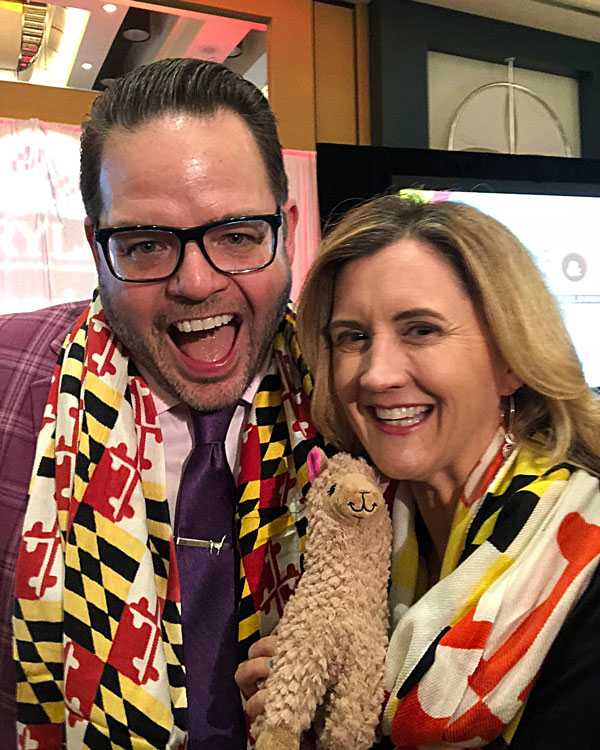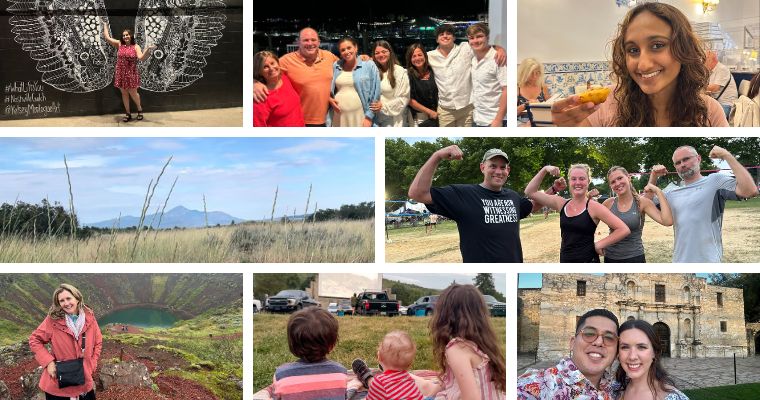Why do I look so excited to be in this photo – and why am I holding a stuffed alpaca?

This is actually a snapshot from the Maryland Travel and Tourism Summit in Cambridge, Maryland.
At the Summit, we had an amazing speaker named Jay Baer (in the photo above). He gave a talk called “Talk Triggers: Turning Your Customers into Volunteer Marketers”.
One way he engaged the audience was by throwing a stuffed alpaca in the crowd — and whoever caught it got to be a guinea pig for quiz questions.
Guess who caught the alpaca. 😉 It was fun to get to engage with Jay during the presentation (and for extra fun, I got to keep the stuffed alpaca afterwards).
His presentation was about how to get people to be your advocates and talk on your behalf.
Statistically, people are likely to make buying decisions based on friend or family recommendations. Businesses are also likely to make B2B decisions based on personal recommendations.
So as a business, your goal should be to create experiences that people naturally want to rave to their friends and family about. When you do that, you’ve created what Jay calls a “talk trigger”.
The goal of a talk trigger is to create a word-of-mouth strategy that does your marketing for you. He listed the four requirements of a successful talk trigger.
A talk trigger should be…
Remarkable
Repeatable
Reasonable
Relevant
The point of these activities is not that they need to be amazing or earth-shattering. They are simple, authentic acts that feel appropriate and right for you… and go a long way for the customer. Happy customers are likely to spread the word to their friends.
What’s an example of a talk trigger? Doubletree Hotel gives out chocolate chip cookies to guests in the lobby. Another example is an oral surgeon who calls his patients the Saturday before they come to his office to talk to them and answer questions. This allows the patients to feel like they have a relationship with them before they come into his office.
The biggest takeaway was to be aware. Have awareness of what people think about you and say about you and build from that.
To get started with creating talk triggers in your business, here are the steps he suggested:
- First, brainstorm what the current customer experience looks like and how you would like to improve it.
- Interview longtime and repeat customers, new customers, and lost customers (6 in each category).
- Ask them: “When you first called, what did you expect would happen?” Did you meet their expectations? Did something “special” happen?
- Brainstorm different types of triggers you could try out.
- Pick one of the triggers, and test and measure it.
- To see if it is working, look at places where people would discuss you. Are they discussing your talk trigger?
- Survey customers and ask them: “Did you mention us to anyone? What did you tell them? Did you happen to tell them any of these things?” (Give a list that includes the talk trigger.)
This can show you if your talk triggers are working! And if it is, great — keep going! If not, try another one and test again.
Whether you’re a travel and tourism-based business or an economic development organization, this is a tool that could be implemented by any business.
What do you think? Does your organization have anything that could count as a talk trigger? Share with us in the comments below!
‘Til next time,
Sandy








